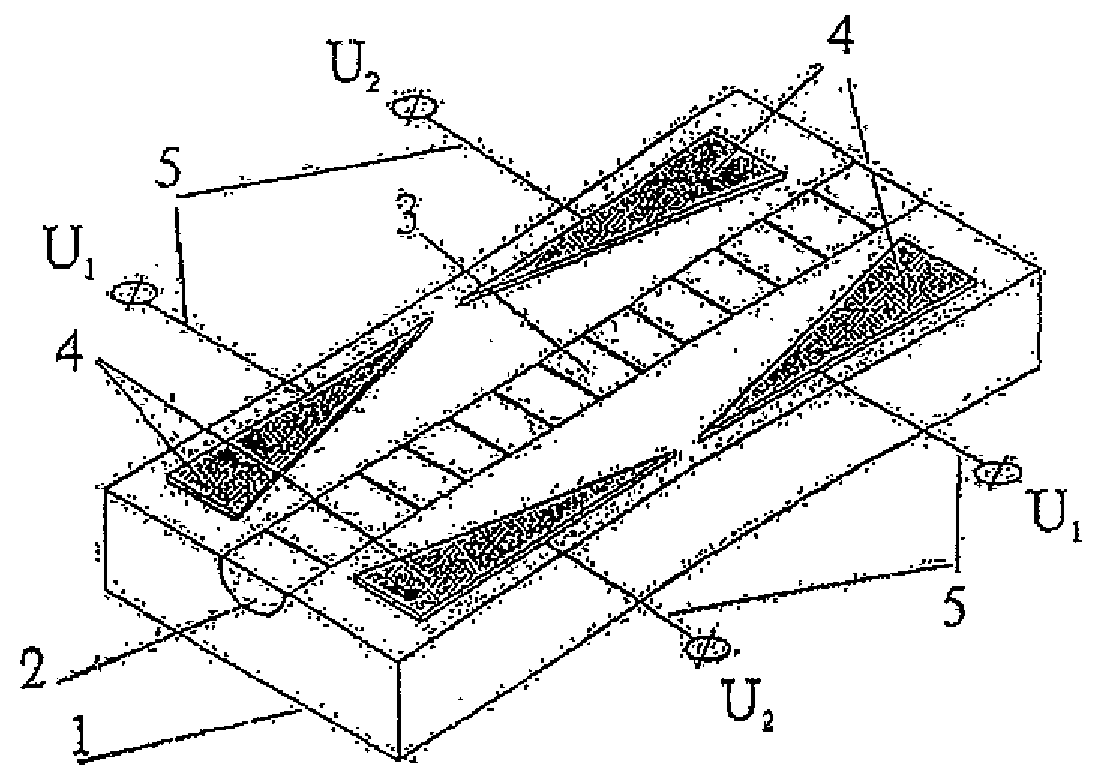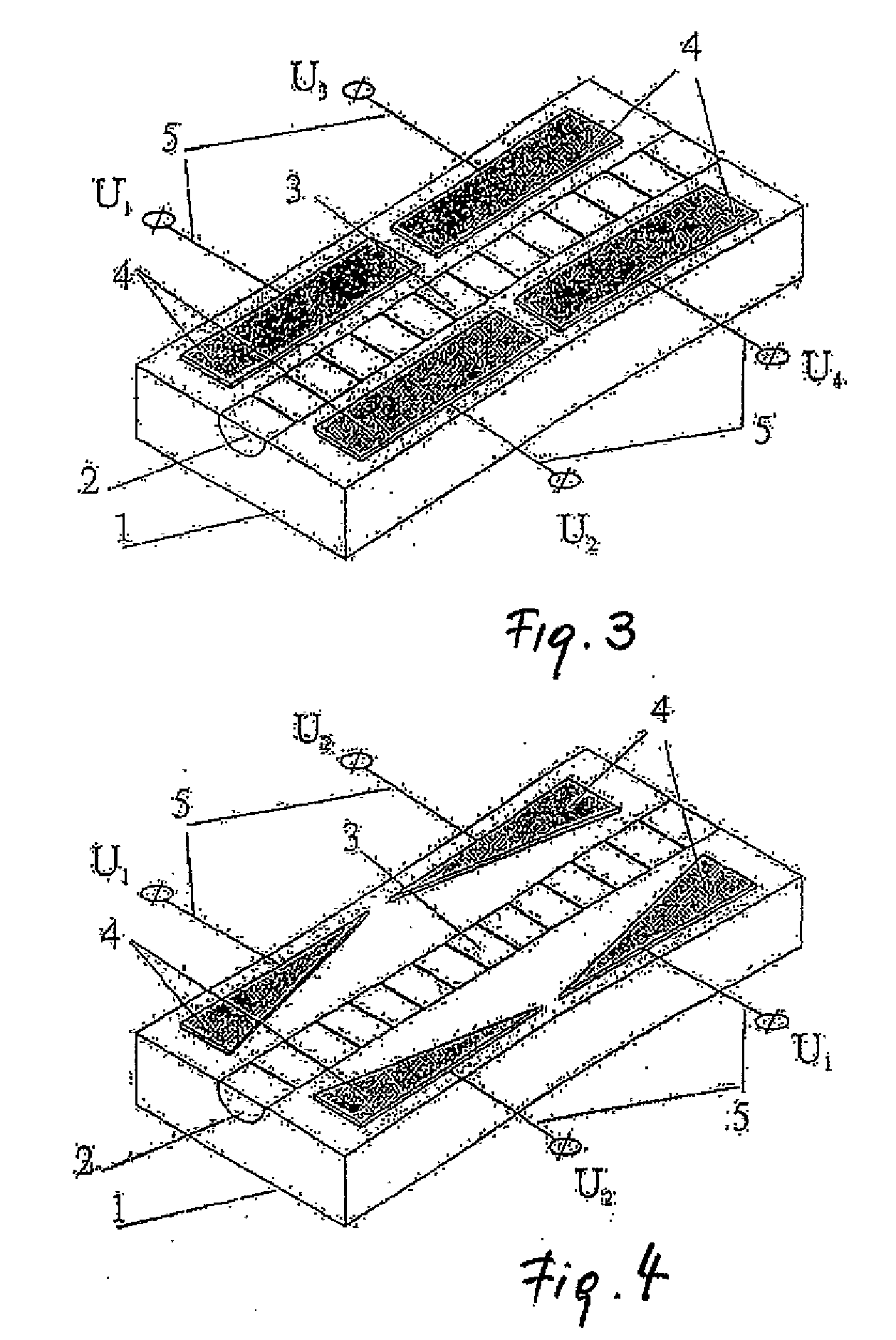Optical Element and Method for Controlling Its Transfer Function
- Summary
- Abstract
- Description
- Claims
- Application Information
AI Technical Summary
Benefits of technology
Problems solved by technology
Method used
Image
Examples
Embodiment Construction
[0027]The object of the invention is, on the one hand, the production of optical elements in an integral optical design that have a multifunctional use (tuneable optical filters, selective optical attenuators and modulators, optical switches and optical equalisers), and which possess a high spectral selectivity, a broad wavelength band of tuneability, great dynamics, and a low tendency toward cross-talk. A further aim of this invention was to develop a process for control of the aforementioned elements that makes it possible to electrically control the profile of the transfer function, the location of the transfer function's maximum, the number of channels to be selected, and compensation of phase distortion, while using a relatively low control voltage, and with a high tuneability and switching speed. The task in hand is resolved by a large number of inventions that are related by one joint intention
[0028]Thus, the task in hand is resolved by virtue of the fact that the optical ele...
PUM
 Login to View More
Login to View More Abstract
Description
Claims
Application Information
 Login to View More
Login to View More - R&D
- Intellectual Property
- Life Sciences
- Materials
- Tech Scout
- Unparalleled Data Quality
- Higher Quality Content
- 60% Fewer Hallucinations
Browse by: Latest US Patents, China's latest patents, Technical Efficacy Thesaurus, Application Domain, Technology Topic, Popular Technical Reports.
© 2025 PatSnap. All rights reserved.Legal|Privacy policy|Modern Slavery Act Transparency Statement|Sitemap|About US| Contact US: help@patsnap.com



